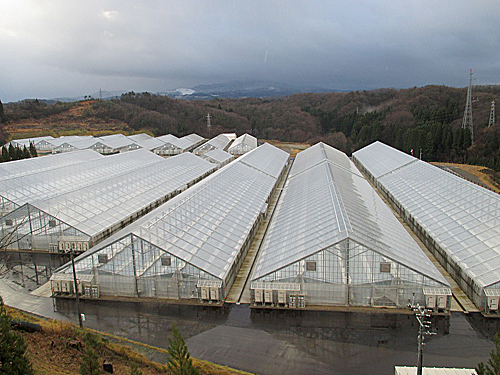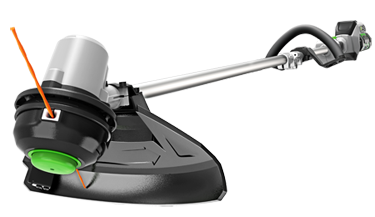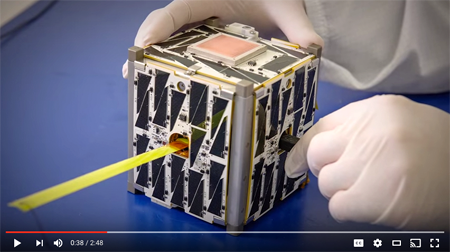 The Phase Change Matters e-mail newsletter is a weekly summary of the latest news and research on phase change materials and thermal energy storage. To subscribe, visit www.puretemp.com/subscribe. For more frequent updates, follow @puretemp on Twitter or visit the Phase Change Matters blog, www.puretemp.com/pcmatters.
The Phase Change Matters e-mail newsletter is a weekly summary of the latest news and research on phase change materials and thermal energy storage. To subscribe, visit www.puretemp.com/subscribe. For more frequent updates, follow @puretemp on Twitter or visit the Phase Change Matters blog, www.puretemp.com/pcmatters.
AGRICULTURE

With help from PCMs, a Japanese company turns trash into tomatoes
A Japanese waste-management company is using waste heat — and phase change material — to grow tomatoes, strawberries and ornamental plants.
Toyama Kankyo Seibi collects 300,000 tons of trash in Toyama prefecture each year. The company incinerates the combustible materials and recycles or landfills the rest. The heat generated by the incineration process drives a steam turbine to generate electricity that powers the TKS complex.
In 2015, TKS built 28 greenhouses to make use of the excess steam. Forbes magazine describes how the greenhouses are heated:
“Large heat-transfer containers are filled with oil that is heated using the residual heat from the steam. The containers incorporate a closed phase-change heat system filled with a heat-storing substance that changes to a solvent-like liquid when heated (the phase-change part), and which is more efficient in retaining heat than is oil.
“A prepared container is transported to a nearby greenhouse on the site and is hooked up to a heat exchanger. The solvent circulates through the exchanger, and the heat is passed on and used to heat up cold water to 55 degrees C. The hot water is then pumped into the greenhouse and fans are employed to circulate air warmed by the water. Complicated, yes! But it works.”
The Japanese government covers more than half of the project’s annual operating cost of 2.7 billion yen ($24 million). The goal is to harvest 500 tons of tomatoes and 1.4 million flowers a year. The produce is sold in stores around the country and as far away as Thailand and Singapore.
THERMAL ENERGY STORAGE
Research on air-cooling system for power plants wins $3.5 million grant
Each day, U.S. thermoelectric power plants withdraw more than 100 billion gallons of water from rivers, lakes, streams and aquifers to cool turbines. Two University of Cincinnati engineering researchers have been awarded nearly $3.5 million to develop an air-cooling system that uses phase change material to eliminate the need to tap local water supplies.
Professors Raj M. Manglik and Milind A. Jog are developing an enhanced air-cooled condenser and a daytime peak-load shifting system that will enable dry cooling for power plants even on hot days. The project is one of 15 awarded grants under ARPA-E‘s Advanced Research In Dry cooling program. The three-year project is outlined on the ARPA-E site:
“The team will transform a conventional air-cooled condenser by incorporating flow-modulating surfaces and modifying the tubular geometry of the system, both of which will reduce heat transfer resistance and increase the thermal surface area. Whenever the air temperature becomes too high for the air-cooled heat exchanger to be effective, the [peak load-shifting system] will cool the air inlet temperature back down to acceptable temperatures.
“This inlet air-cooler technology removes heat from the incoming air and stores it in a thermal energy storage (TES) system that incorporates phase-change materials, which can store and release heat over a range of temperatures. During periods when the ambient air is cooler, the TES will release the stored heat to the atmosphere. Together, the combined innovations could quadruple the condenser’s coefficient of performance, while the system’s compact design will result in a smaller footprint than other air-cooled designs.”
AEROSPACE
Roccor to develop flexible PCM panels for miniature satellites
A proposal by Roccor LLC of Louisville, Colo., to develop lightweight, flexible thermal energy management panels for CubeSats and other small satellites is one of 399 projects selected by NASA this week to support future missions into deep space. The thermal panels incorporate paraffin phase change material inside a metal case with an internal metal woven mesh to protect on-board electronics in miniaturized satellites.
Roccor’s proposal describes the potential applications:
“The primary NASA target application for the proposed space-rated PCM panel technology is future NASA CubeSat and SmallSat spacecraft for which thermal control of on-board electronics is a major bottleneck in the system design. In particular, the proposed technology will enable efficient thermal control by maintaining a constant temperature heat sink or heat source for a range of electronic components in rapidly changing thermal environments. The PCM panel is being designed as a lightweight and flexible component, yet having high thermal capacity, requiring less mass and volume than currently used carbon-fiber and aluminum honeycomb composite panels.”
Two other Roccor proposals were approved for Phase I development. Each will receive six-month contracts valued at up to $125,000. Click on the image below to learn more about the CubeSats being developed at NASA’s Jet Propulsion Lab in California.
IN BRIEF
• U.K. thermal battery maker Sunamp has raised 3.2 million pounds ($4.6 million) in its latest investment round. Sunamp said “an international private investor in the energy market” led the funding round, along with existing investors Scottish Investment Bank, Par Equity, Equity Gap, Highland Venture Capital and Old College Capital. The company said the money would be used to fund expansion and product development.
• Viking Cold Solutions‘ hybrid cooling system is on display at the industrial technology show in Hannover, Germany, this week. The new system combines phase change material with solar photovoltaics for use in supermarkets and food warehouses. The Houston-based company says the system can reduce electricity peak demand by up to 90 percent.
 • The new EGO Power+ 15-inch string trimmer, which uses phase change material to keep its rechargeable battery cool, was the highest-rated of 11 battery-powered trimmers reviewed this month by Pro Tool Reviews.
• The new EGO Power+ 15-inch string trimmer, which uses phase change material to keep its rechargeable battery cool, was the highest-rated of 11 battery-powered trimmers reviewed this month by Pro Tool Reviews.
• The New York State Energy Research and Development Authority has signed an agreement with the Department of Energy’s Advanced Research Projects Agency-Energy to work together to stimulate development of “high-potential, high-impact clean energy technologies” in the state. The collaboration will focus on a broad range of technology, including smart grid, distributed energy, renewable energy and energy storage.
• New report from Future Market Insights: “Temperature Controlled Packaging Solutions Market: Global Industry Analysis and Opportunity Assessment 2015-2025”.
• South Africa’s new Bokpoort concentrated solar power plant has set an African record for continuous supply of electricity: 161 hours, or nearly six days. The plant’s molten salt system provides 9.3 hours of thermal storage.
• Pop goes the weasel: A small mammal is suspected of shutting down the world’s most powerful scientific instrument. The Large Hadron Collider, a 17-mile superconducting machine designed to smash protons together at close to the speed of light, went offline Thursday night. NPR reports that that the charred remains of a furry creature, tentatively identified as a weasel, were found near a gnawed-through power cable at the facility in Switzerland.
RESEARCH ROUNDUP
For our full list of recent academic research, see puretemp.com/academic. Here are highlights from the past week:
From Applied Energy:• Thermal performance of buildings integrated with phase change materials to reduce heat stress risks during extreme heatwave events
From Composites Part A: Applied Science and Manufacturing:
• A capric-palmitic-stearic acid ternary eutectic mixture/expanded graphite composite phase change material for thermal energy storage
From Applied Thermal Engineering:
• Reducing heat loss through the building envelope by using polyurethane foams containing thermoregulating microcapsules
• Thermal compatibility of Sodium Nitrate/Expanded Perlite composite phase change materials
From Materials Chemistry and Physics:
• Preparation of thiol-ene based photo-crosslinked polymer as a potential phase change material
From Key Engineering Materials:
• Dual-Functional Phase Change Nano-Capsules Based on n-Octadecane Core and Polypyrrole Shell
From Solar Energy:
• Thermal performance of a PCM-filled double-glazing unit with different thermophysical parameters of PCM
From Renewable Energy:
• Numerical analysis of latent heat thermal energy storage using encapsulated phase change material for solar thermal power plant
From Renewable Energy and Sustainable Technologies for Building and Environmental Applications:
• Finite Element Analysis of Functional Yarn with Thermal Management Characteristics
NETWORKING
Connect with PCM experts and industry leaders on LinkedIn
More than 700 of your peers have joined a LinkedIn group devoted to the discussion of phase change material and thermal energy storage. The Phase Change Matters group is an interactive complement to the award-winning blog and newsletter of the same name.
You are invited to join the group and connect with PCM and TES experts from around the world. New members this week include David Hoke, an energy efficiency consultant based in Carlsbad, Calif.; Robert Ristow, strategic sourcing leader at Encapsys LLC, Appleton, Wis.; Jianying (Jane) Hu, a graduate research assistant and teaching fellow at Case Western Reserve University, Cleveland, Ohio; and George Meyer, CEO at Celsia Inc., Santa Clara, Calif.
YOUR TURN
Wanted: News tips about PCMs and thermal energy storage
Does your company, agency or university have a job opening, new research, new product or other news you’d like to share? We would love to hear from you. Please contact Ben Welter of Entropy Solutions at bwelter@puretemp.com.
